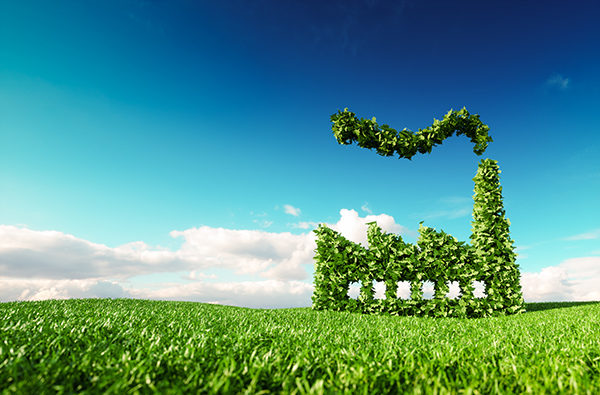Coaching companies on creating sustainable supply chains: interview with Sarah Watt
What do companies need to do to reduce greenhouse gas emissions and attain their sustainability goals? Gartner’s Sarah Watt has some ideas.

As climate change continues to gain attention among government bodies, businesses, and consumers, the need for sustainable supply chains is more apparent than ever. But how do companies make their supply chains more environmentally friendly?
Sarah Watt is making that her mission. As a senior director analyst and research director with Gartner’s Supply Chain Group, she helps companies apply sustainability principles within their supply chains. Her aim is to demonstrate that embracing sustainability can be profitable for business while also being good for the planet.
DC Velocity Senior Editor Victoria Kickham recently interviewed Watt for an episode of DCV’s “Logistics Matters” podcast. What follows are excerpts from their conversation.

SARAH WATT
Q: What are the primary strategies companies are using to reduce greenhouse gas emissions today?
A: I speak to many different supply chain leaders, from logistics professionals to manufacturing leaders to sourcing and procurement professionals. When companies get started on their greenhouse gas emissions-reduction strategy, they tend to begin with those parts of the organization that are directly under their control. Principally, the starting point is manufacturing and looking at opportunities to reduce emissions there. They naturally look at their use of electricity and natural gas, but what has changed in the last couple of years is that increasingly, we are seeing focus being placed on purchased goods and services. It is raw materials coming into the organization, but also on inbound logistics and outbound transportation. But I will tell you, logistics is one of the most difficult carbon data sets to collect.
Q: One of the terms that I hear a lot in supply chain circles is “Scope 3” emissions. Can you define that for us and explain how that comes into play?
A: Sure. There is an accounting framework for greenhouse gas emissions called the Greenhouse Gas Protocol. It was put together many years ago under the U.N., and it divides greenhouse gases into three different scopes. Scope 1 is direct emissions created by the organizations themselves, so that is any fuel that is combusted within the four walls of a company. Think about natural gas consumption or combusting diesel gasoline.
Scope 2 refers to electricity that we consume within our organization or purchased goods. This is an indirect greenhouse gas emission. Someone else is creating that energy on our behalf, and we are using it within our organization.
Then we get to Scope 3, which encompasses a number of different categories both upstream and downstream within the supply chain. Upstream, it encompasses purchased goods and services, capital goods, inbound transportation, and distribution, as well as things like business travel, waste generation, and commuting.
The downstream elements of Scope 3 encompass things like the use of sold products, such as buying a laptop as a consumer. A lot of the greenhouse gas emissions are created in product use compared with the other steps in the value chain. That includes outbound transportation as well as end-of-life management.
Where we are seeing supply chain leaders pay particular attention to Scope 3 is on purchased goods and services, transportation, and distribution as well as use of products sold. That is where many of our clients are focusing their data collection activities.
Q: In your recent work, you have outlined steps companies should take to move beyond some of the internal strategies we’ve talked about, especially if they have very large emissions-reduction goals. Can you tell us about this work, and what you mean by “significant” or “considerable” emissions-reduction goals?
A: We are seeing many companies make quite big commitments, and it is very topical at the moment with the recent COP26 meetings in Glasgow, Scotland. Not only are countries making commitments, but we see companies doing likewise. These companies are setting size-based targets as well as committing to becoming net zero. A lot of these commitments extend beyond the four walls of the organization, beyond the manufacturing and operations, and into the supply chain.
When we think about a lot of the goods and services that we purchase as consumers, the big greenhouse gas emissions aren’t necessarily in the manufacturing of that product, but rather back in the supply chain in the raw materials that we use to make those goods. Those gas emissions are also in the globalized supply chain moving different products around the world. That adds up to significant greenhouse gas emissions.
What has changed in the last five years or so is that we are seeing much more of a holistic emphasis being put on emissions reduction. Whereas previously companies would only be focused on their discrete activities within their organization, now, it is much more about: How do I work with my suppliers? How do I work with my 3PL partners to reduce these greenhouse gas emissions?
Q: Does this get into what you mentioned earlier about the difficulty of determining the logistics portion of supply chain emissions?
A: Absolutely. When we collect greenhouse gas information for our organization, it is relatively straightforward. At a minimum, we can use billing information from the utility provider. But logistics is a very difficult data set to collect. We’ve got to think about where we are moving goods around the world or the different carbon factors associated with different modes of transportation. We’ve got to think about warehousing and how much space we are taking up in that warehouse. That data set becomes quite tricky quite quickly.
However, there are some great digital solutions on the market and, of course, logistics service providers themselves are able to provide this information to some extent. The GLEC framework, which stands for Global Logistics Emissions Council, is really a fantastic framework that helps companies clarify their data collection protocols when it comes to greenhouse gas emissions.
Q: You also mentioned in your recent work three strategic partnerships that are necessary for greatly reducing greenhouse gas emissions. Can you tell us what those partnerships are?
A: Absolutely. Logistics leaders can’t reduce emissions by themselves. We have been really good at focusing on optimization types of activities, whether it be modal shifts or load optimization or network design. On a good day, depending on where you start from, maybe that gets you up to a 15% emissions reduction, depending on your baseline condition. But we know that many leaders have got really big ambitions when it comes to reducing emissions for Scope 3 and that includes logistics. The only way we can achieve that is through partnerships.
In our research, we are advocating for logistics leaders to form three partnership relationships. The first is to work together through industry associations. That gives us insight into new technology that has been tested in different markets. It helps us to come together with other companies and learn and then collectively work on scaling those new technologies.
The second partner we need to work with is customers. Our customers often have similar emissions-reduction goals to our own, but they might not be aware of how their shipping choices are creating adverse impacts. Now, I am not advocating “choice editing,” where we force customers to receive products in a certain way. That would be a disaster from a customer service perspective, but it is about creating awareness. A customer may already have a commitment to net zero, or they want to radically reduce their greenhouse gas emissions and have their science-based targets in place. So, it is creating visibility of the emissions associated with their shipping choices, and it is giving them alternatives as well.
Lastly, I would encourage you to partner with your 3PL [third-party logistics service provider] to understand its investment strategy and to develop a joint roadmap for emissions reduction. I often see a little bit of a mismatch in expectations here when I speak to clients. Shippers and logistics professionals often express a very strong commitment to decarbonization. But when I speak to 3PLs, I often hear that they have the commitment, but the journey is taking slightly longer. So, there is a slight mismatch in expectations as to how quickly we are going to go.
Part of the problem is that we are relying on decarbonization of the logistics ecosystem. We are relying on new technologies coming to market, such as EV [electric vehicle] and hydrogen technologies to power trucks. Then for sea and air freight, it is a little more difficult because those assets are in the field for such a long time. What it looks like will happen is that we will be seeing biofuel solutions as an interim on that decarbonization journey.
The partnership with the 3PL is really important; we can’t expect our 3PLs to achieve our goals for us. We need to be working with them to identify opportunities for current investment and joint action.
Editor’s note: This story was based on an interview conducted for a recent episode of DCV’s “Logistics Matters” podcast, a weekly roundup of news and industry trends and developments. To learn more about the “Logistics Matters” podcast, go to dcvelocity.com/podcasts or subscribe at your favorite podcast platform.
Related Articles

Copyright ©2024. All Rights ReservedDesign, CMS, Hosting & Web Development :: ePublishing